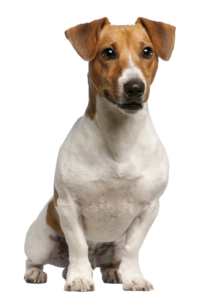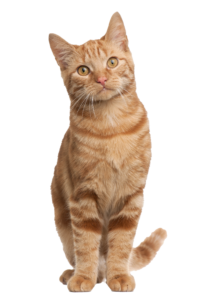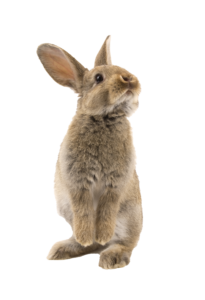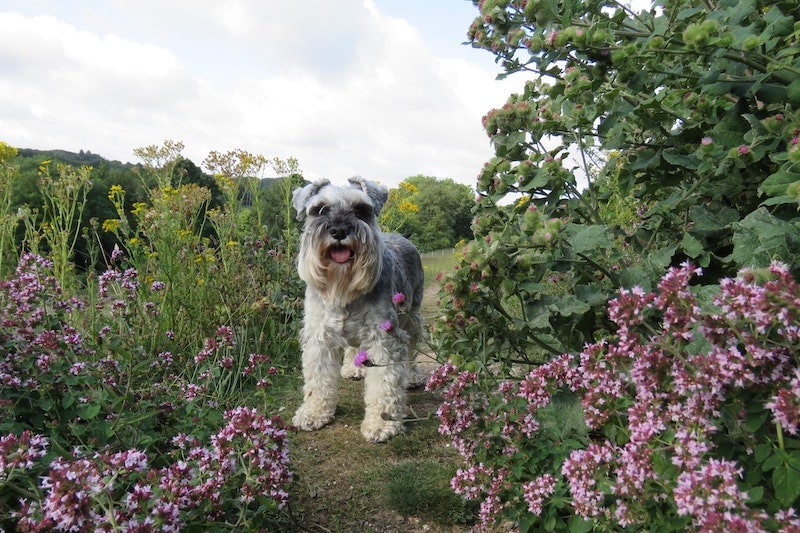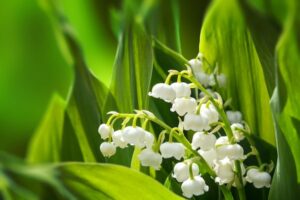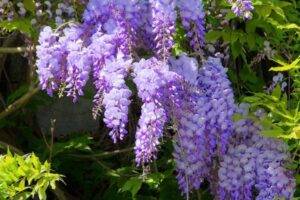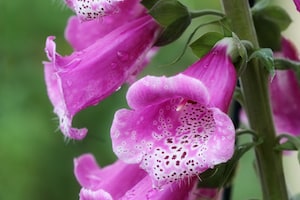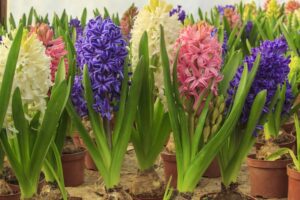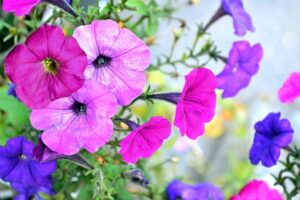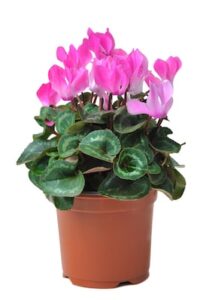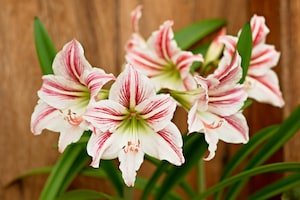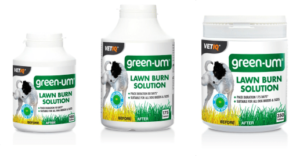Approximately 27 million people across the UK participate in gardening on a regular basis. If you are one of these people, and are also a dog owner, you might have concerns about how your precious plants might affect your canine companion.
Well, we’re here to help! Read on to learn what plants are poisonous to dogs, then you’ll have no trouble making sure your garden is a dog-friendly haven.
Quicklinks
- Azaleas
- Daffodils
- Hydrangea
- Lily of the Valley
- Oleander
- Wisteria
- Foxglove (Digitalis)
- Hyacinth
- Tulip
- Rhododendron
- Bluebells
- Morning Glory
- Delphinium
- Cyclamen
- Amaryllis (Belladonna)
- Aconitum (Monkshood)
Azaleas
Azaleas have a beautiful bright pink hue that makes them easy to spot, but they also contain a toxin known as grayanotoxin.
Azaleas are toxic to dogs, cats, and horses. If your dog ingests azalea, they may experience vomiting, diarrhoea, general weakness, and even heart failure in some cases.
Instead of planting azaleas, consider snapdragons or blue-eyed daisies.
Daffodils
Daffodils are a popular, cheery yellow flower present in a lot of gardens. If you’re a dog owner, though, you may want to reconsider using them. They contain a toxin known as lycorine.
If a dog consumes this, they start salivating excessively, and they experience diarrhoea or vomiting. They can also be susceptible to heart problems, low blood pressure, and tremors.
Hydrangeas
Hydrangeas are characterized by their round, puffy shape. They come in a variety of colours, including pink, purple, and white.
Hydrangeas contain a compound called cyanogenic glycoside. This compound can cause vomiting, diarrhoea, and depression. Marigolds and petunias are safer options to use instead.
Lily of the Valley
All lilies are toxic to dogs, including Lily of the Valley. This plant, known for its small white flowers that hang down toward the ground, contains compounds known as cardenolides.
Cardenolides can cause vomiting, an irregular heartbeat, and low blood pressure. Some dogs also experience disorientation and seizures after consuming them, and they could even fall into a coma.
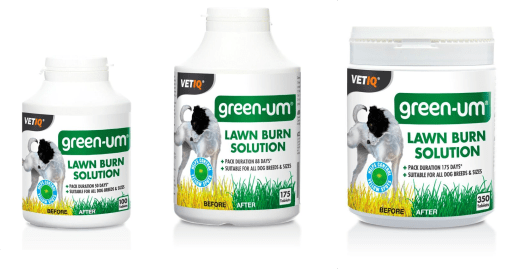
VetIQ Green-UM Lawn Burn Solution is a natural dietary supplement that helps avoid unsightly yellow spots on your lawn caused by your dog’s urine.
Oleander
Oleander flowers have a rose colour to them and shrub-like leaves. They contain cardiac glycosides, which can cause excessive drooling, depression, and diarrhoea in dogs. They can lead to severe abdominal pain and even death in some cases, too.
Lemon bottlebrush is a safe alternative to oleander.
Wisteria
Wisteria is easy to spot with its bright purple hue. Wisteria contains lectins, as well as the compound wisterin glycoside.
Exposure to these toxins can cause dogs to become depressed. They might also vomit (and may vomit blood) and have diarrhoea, too.
Climbing plants like passionflower and honeysuckle can be used instead of wisteria.
Foxglove (Digitalis)
Foxglove striking tubular bell wildflowers that are poisonous to dogs, cats and humans. They contain cardiac glycoside toxins, naturally-occurring poisons that can affect the heart. All parts of the plant are considered toxic however the level of poisoning varies depending on the particular plant and the part of the plant ingested.
Ingestion can result in an abnormal heart rhythm, electrolyte issues, drooling, nausea, vomiting, dilated pupils, tremors, and seizures.
Hyacinths
Hyacinths belong to the Liliaceae plant family. They contain alkaloids that are particularly concentrated in the bulbs, and that are toxic to dogs when ingested.
It can result in excessive salivation, vomiting, and diarrhea as well as more severe symptoms such as rapid heart rate and respiratory difficulty.
Tulips
The very popular tulip plants are also members of the Liliaceae plant family and contain allergenic lactones. As with Hyacinths, the bulbs contain high concentrations of the toxins and ingestion can cause excessive salivation, vomiting, diarrhea, rapid heart rate and respiratory difficulty.
Rhododendrons
Rhododendrons are large flowering plants of the same genus as azaleas. They are a popular choice of garden flowers. All of these plants contain grayanotoxins which are toxic to both humans and dogs, and can be fatal.
If ingested, drooling and vomiting usually occurs within 6 hours and other symptoms can include diarrhea, dizziness, paralysis, impaired vision, shortness of breath and seizures.

VetIQ Green-UM Lawn Burn Solution is a natural dietary supplement that helps avoid unsightly yellow spots on your lawn caused by your dog’s urine.
Bluebells
A popular garden plant, the bluebell contains glycosides, which are poisonous to humans and animals, including dogs. Ingestion can cause a low heart rate, nausea, diarrhoea and vomiting.
Morning Glory
The seeds of certain species of the popular morning glory plants (Ipomoea violacea and Ipomoea carnea specifically) are poisonous to dogs. They contain lysergic alkaloids that can cause diarrhea, anemia, vomiting, liver failure, lethargy and confusion.
Delphinium
The impressive delphinium plant contains diterpene alkaloids. When ingested, these alkaloids prevent nerve signals from traveling from the brain to the muscles, which causes weakness and even paralysis. This can also cause symptoms such as excessive salivation (drooling), irregular heart beat, constipation, and organ failure, and it can be fatal.
Cyclamen
The cyclamen is a beautiful and popular house plant. The cyclamen plant contains saponins, and when chewed or ingested by dogs and cats, it can cause excessive salivation, vomiting and diarrhea.
In large doses, these plants can result in cardiac issues, seizures and even death.
Amaryllis (Belladonna)
The beautiful amaryllis plant contains lycorine, which can cause excessive salivation, vomiting, diarrhea, abdominal pain, lethargy and tremors in both cats and dogs.
The bulb of the plant is more dangerous than the flowers and stalk, but all should be kept well clear of your pet.
Are you struggling with yellow or brown patches on your lawn? For over 15 years our customers have had great result from Vet IQ Green-UM Lawn Burn Solution, which is a natural product that helps prevent yellow spots appearing on your lawn.
Aconitum (Monkshood)
Aconitum plants, commonly known as monkshood, contain a toxin known as aconitine which can be deadly. Although the smell and the taste wards off dogs, ingestion can be fatal without treatment.
Symptoms can include abdominal pain, paralysis, seizures, shallow breathing, and vomiting.
7 Tips to keep your dog out of the garden and flower beds this Summer.
So, now you know what plants are poisonous for your dog, you can keep them out of your garden and keep your dog safe. You might be wondering, though, what you can do to protect your garden from your dog!
Dog’s can wreak havoc on these spaces, from chewing up flowers to leaving yellow spots on the grass from their urine. There are steps you can take to minimise their damage, though.
Setting up a strong fence can help to keep your dog out of your garden, for example. Using a lawn burn solution will give your dog extra nourishment and also prevent yellow spots from popping up on your grass in the areas where they urinate.
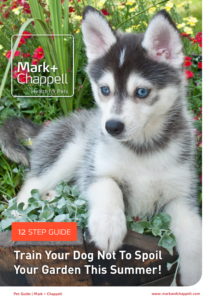
This 12-step guide contains some helpful tips to keep your dog from wreaking havoc on your plants and gardens this Summer, without having to keep them cooped up!
Protect Your Dog and Your Garden Today
It can be overwhelming at first to learn about what plants are poisonous to dogs. The sooner you learn, though, the sooner you can make your garden pet-friendly and ensure your dog stays safe.
Keep the list and tips outlined above in mind and you’ll be able to make your garden free from the most serious plant offenders. You’ll also be able to keep your garden and yard safe from your dog – everyone wins!
Are you struggling with yellow or brown patches on your lawn? For over 15 years our customers have had great result from Vet IQ Green-UM Lawn Burn Solution, which is a natural product that helps prevent yellow spots appearing on your lawn.

